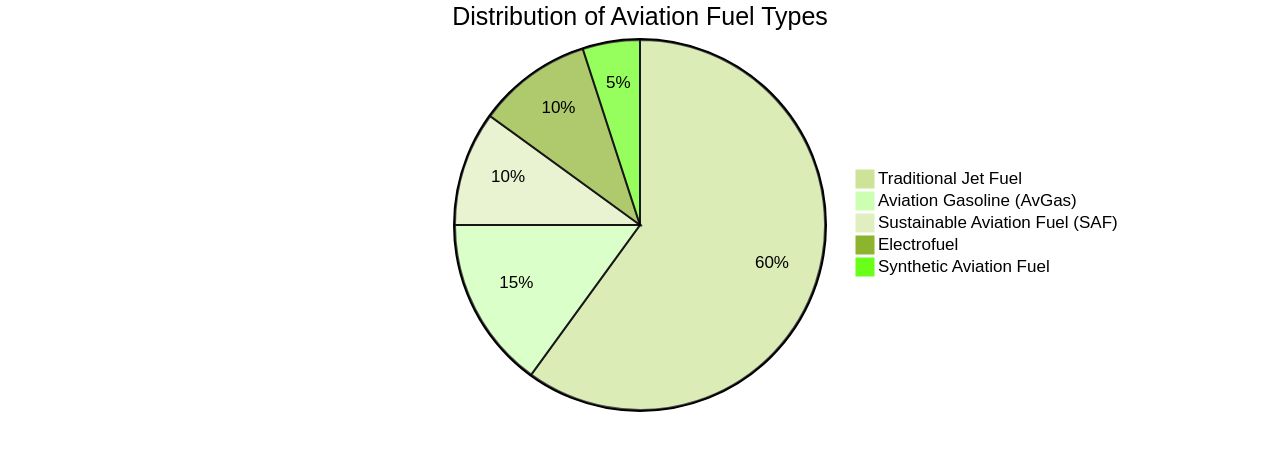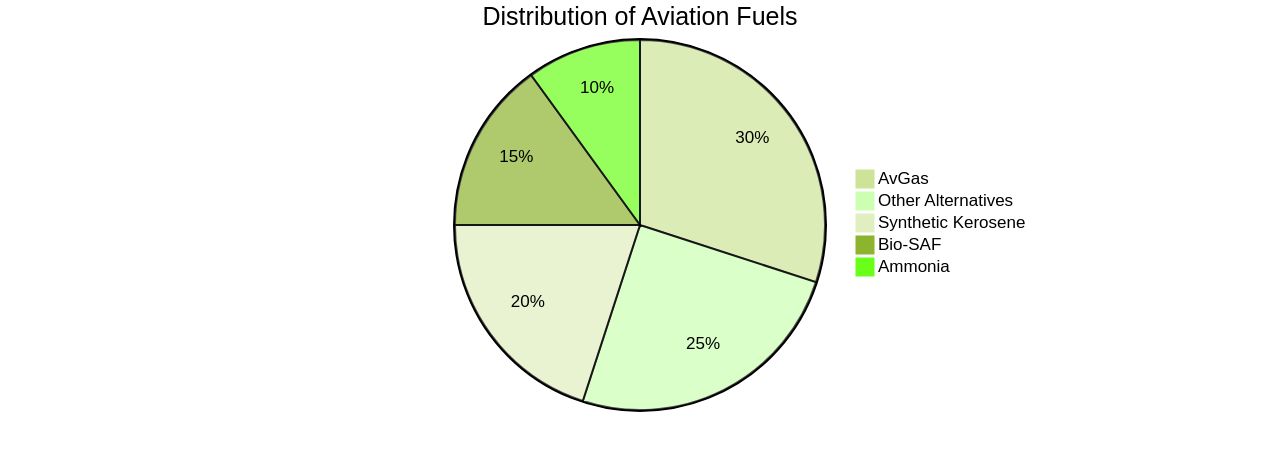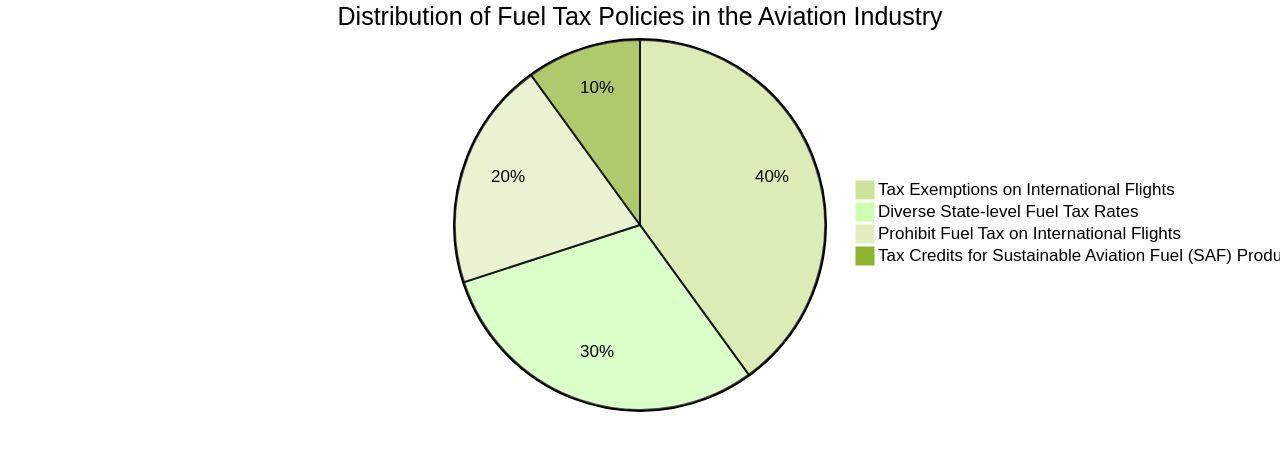Introduction
The future of aviation fuel is poised to be much more diverse and environmentally friendly, with the industry exploring alternative fuels such as Sustainable Aviation Fuel (SAF) and electrofuel. However, the availability of SAF on a large scale remains a challenge, leading to higher costs compared to traditional fuels.
Despite these challenges, alternative fuels are garnering interest as they require minimal alterations to the existing airport infrastructure. Synthetic aviation fuel is seen as a promising alternative, with substantial reductions in carbon dioxide emissions compared to fossil fuel.
The competition for alternative fuel supply is expected to be fierce, particularly from sectors like road transport. Nonetheless, demonstrative strides are being made in the adoption of SAFs, with several successful test flights powered by 100% SAFs. The industry is committed to making substantial progress in the coming years towards achieving net-zero carbon dioxide emissions by 2050.
Types of Aviation Fuel
Planes use jet fuel and aviation gasoline (AvGas) as their types of fuel, with each catering to specific types of aircraft. However, the future of aviation fuel is poised to be much more diverse and environmentally friendly.
The industry is increasingly exploring alternative fuels, such as Sustainable Aviation Fuel (SAF) and electrofuel, to achieve significant reductions in carbon emissions. What type of fuel do planes use? Yet, the availability of SAF on a large scale remains a challenge, leading to higher costs compared to traditional fuels.
Furthermore, it is important to evaluate what type of fuel do planes use, specifically biofuels, to avoid any potential harm to onboard machinery. It's crucial to understand their properties, production process, and ideal storage conditions, and ensure compatibility with existing infrastructure.
Despite these challenges, what type of fuel do planes use is garnering interest as it requires minimal alterations to the existing airport infrastructure. Synthetic aviation fuel, for instance, is considered a promising alternative to fossil fuel for planes, with significant reductions in carbon dioxide emissions.
However, the exact reduction percentage is still under study. What type of fuel do planes use? Such fuels could play a key role in achieving the aviation industry's goal of achieving net-zero carbon dioxide emissions by 2050. The competition for alternative fuel supply is expected to be fierce, particularly from sectors like road transport, which have already established a presence in the biofuels market. What type of fuel do planes use in comparison? Nonetheless, significant progress is being made, with multiple test flights successfully taking off using 100% SAFs, which are the type of fuel planes use. While alternative fuels constituted less than 0.2% of the global jet fuel supply in 2022, the industry is committed to making substantial progress in the coming years.

Jet Fuel: The Primary Fuel for Aircraft
Aviation turbine fuel (ATF), commonly known as jet fuel, is the lifeblood of commercial aircraft. It is a specialized kerosene-based fuel, categorized into various grades like Jet A, Jet A-1, and Jet B, each with unique composition and specifications.
However, the aviation sector, contributing about 2% of global carbon emissions, is under pressure to reduce its carbon footprint. Initiatives are underway to replace fossil fuel-derived ATF with Sustainable Aviation Fuels (SAFs), which are produced from diverse feedstocks like biomass, waste products, and natural oils and fats.
SAFs have the potential to deliver net-zero CO2 emissions by 2050, a goal driven by new policies in the EU and the US, and embraced by airlines worldwide. Despite current SAF supply being less than 0.2% of global jet fuel, several test flights powered by 100% Safe have proven the viability of this green alternative.
The aviation industry, however, faces challenges of expanding SAF supply and ensuring its sustainability, affordability, and production at economically efficient scales. Moreover, the current limitation of blending only up to 50% SAF with traditional jet fuel due to the lack of aromatics in SAFs, compounds essential for preventing fuel leakage and fire risk, is another hurdle to overcome. Nevertheless, the spirit of innovation and commitment to decarbonization is strong, as exemplified by Virgin Atlantic's flight powered by 100% SAF, marking a significant step in the journey towards sustainable aviation. The future of jet fuel, therefore, lies in the successful development and deployment of SAFs, underpinning the transition to a cleaner, greener aviation industry.
Gasoline and AvGas: Used in Smaller Aircraft
Aviation petrol, commonly referred to as AvGas, is a fuel variant specifically engineered for smaller general aviation aircraft, particularly piston-engine airplanes. This specialized fuel boasts a higher octane rating compared to conventional automotive gasoline.
This high octane rating is integral in preventing engine knocking, thereby promoting seamless engine operation. AvGas is often colored to make it distinguishable from other gasoline types and is available in various grades, such as 100LL (low lead) and 100 (no lead).
However, the aviation industry is on the cusp of a new era in fuel management. As the industry grapples with a growing focus on sustainability, it is essential to consider the potential of synthetic kerosene, a sustainable aviation fuel.
This green fuel variant can be derived from a range of sources, including carbon dioxide (CO2), water, green electric energy, used edible oil, municipal waste, and biomass. However, significant financial investment is required to make the production of this fuel economically viable.
Furthermore, the aviation industry is also exploring the potential of bio-SAF and ammonia as sustainable fuel alternatives. These alternatives could meet 86% of the overall demand and represent a realistic fuel mix for the aviation industry by 2050. However, achieving this multi-fuel future will necessitate substantial innovation, significant cost reductions, and strategic changes in the aviation industry. Finally, it's important to note that legislation is already in motion to phase out leaded avgas. For instance, recent legislation introduced in Colorado and California requires airports to develop plans to phase out leaded avgas while supporting the infrastructure for unleaded fuel. This shift is a testament to the industry's commitment to a cleaner, greener future.

Biofuels and Sustainable Aviation Fuel
A significant shift is occurring in the aviation industry, a major contributor to global CO2 emissions, as it embraces Sustainable Aviation Fuels (SAFs). These fuels, derived from renewable feedstocks such as plant oils, waste materials, and animal fats, are seen as a viable solution for decarbonizing aviation.
Various production pathways exist, including Hydroprocessed Esters and Fatty Acids (HEFA) and Fischer-Tropsch (FT) processes. Notably, BioForming® technology stands out, enabling a total transition from blending traditional fuels with SAFs to a 100% SAF solution, a move that could drastically cut carbon emissions.
However, SAF production is not without its challenges. The vast amount of biomass needed to power the aviation industry is a significant hurdle.
Mismanaged biomass production could compete with food resources in less wealthy nations. Furthermore, aviation fuels are tightly regulated for safety reasons, necessitating specific chemical and physical properties.
In response to these challenges, innovative methods for SAF production are being explored. For instance, Uppsala University research groups are investigating a photobiological-photochemical method to produce synthetic SAF.
They are genetically modifying cyanobacteria to produce the hydrocarbon isoprene, which can be transformed into larger hydrocarbons akin to current aviation fuels. In this context, Unifuel.tech, a subsidiary of Universal Fuel Technologies, offers a technology called flexiforming. This technology allows operators to determine their decarbonization pace and can be installed in a dormant hydrotreater or reformer, reducing capital expenditure and carbon intensity. After providing information about feeds, target products, and existing facilities, operators can expect a response within 24 hours to identify the optimal flexiforming application. In conclusion, the search for sustainable solutions in the aviation industry is accelerating, with Safe playing a pivotal role. However, a balanced approach is crucial, taking into account environmental impact, safety regulations, and potential socio-economic consequences.
Regulations and Taxes on Aviation Fuel
The aviation industry is characterized by a unique taxation landscape. For instance, kerosene, the primary fuel for aircraft, enjoys a tax exemption for all international flights as per the Chicago Convention, a UN treaty from 1944.
This policy was initially implemented to support the nascent aviation industry by preventing double taxation on fuel. Consequently, in many cases, there is no taxation on fuel at all.
For instance, the European Union prohibits fuel tax on international flights departing from its member states. Despite the allowance for taxation on domestic flights, no EU member states have enacted this policy.
In contrast, the United States has diverse state-level fuel tax rates. For example, California has the highest state gas tax rate at 77.9 cents per gallon, whereas Alaska has the lowest at 9.0 cents per gallon.
This variability reflects the 'user fees' concept, where fees are imposed to cover the cost of services provided, thereby encouraging efficient road use. Recently, the Treasury Department issued guidelines for tax credits for sustainable aviation fuel (SAF) producers, ranging from $1.25 to $1.75 per gallon.
These credits, part of President Biden's Inflation Reduction Act of 2022, aim to increase SAF supply and reduce its cost, which is significantly higher than regular jet fuel. These guidelines, however, have raised concerns among environmentalists about the sustainability of fuels made from crops. Simultaneously, Singapore plans to introduce a levy on airfares to fund SAF. The levy will vary based on factors such as flight length and ticket class. All flights departing Singapore must have 1% SAF in their tanks by 2026, increasing to 3-5% by 2030. This approach indicates that passengers will bear some of the cost of decarbonizing the aviation industry, emphasizing the inevitability of additional costs in aviation's transition to sustainability.

Conclusion
In conclusion, the aviation industry is actively exploring alternative fuels like Sustainable Aviation Fuel (SAF) and electrofuel to achieve a more diverse and environmentally friendly future. SAFs offer significant reductions in carbon emissions compared to traditional fuels, although their availability on a large scale remains a challenge.
Despite these challenges, alternative fuels are gaining interest due to their minimal impact on existing airport infrastructure. Synthetic aviation fuel shows promise in reducing carbon dioxide emissions, supporting the industry's goal of achieving net-zero carbon dioxide emissions by 2050.
Successful test flights powered by 100% SAFs have already taken place, demonstrating the viability of these fuels. While alternative fuels currently make up a small fraction of global jet fuel supply, substantial progress is expected in the coming years.
The transition to sustainable aviation fuel extends beyond commercial aircraft to smaller general aviation aircraft that use gasoline and AvGas. The industry is exploring synthetic kerosene and other sustainable fuel alternatives like bio-SAF and ammonia.
However, innovation and cost reductions are needed for widespread adoption. Producing SAFs comes with challenges such as sourcing biomass without competing with food resources.
Innovative methods like photobiological-photochemical processes and flexiforming technology are being explored to overcome these obstacles. Regulations and taxes on aviation fuel vary globally, with kerosene enjoying tax exemptions for international flights under the Chicago Convention. Recent guidelines for tax credits aim to increase SAF supply and reduce costs. Singapore plans to introduce levies on airfares to fund SAF implementation. In summary, the aviation industry is making significant strides towards a more sustainable future with alternative fuels like SAFs. These fuels offer substantial reductions in carbon emissions and minimal infrastructure modifications. Despite challenges, the industry's commitment to achieving net-zero carbon dioxide emissions by 2050 ensures continued progress in alternative aviation fuels.




